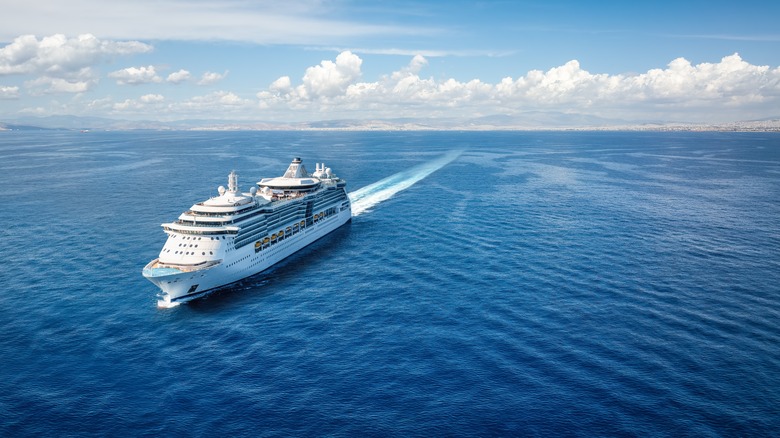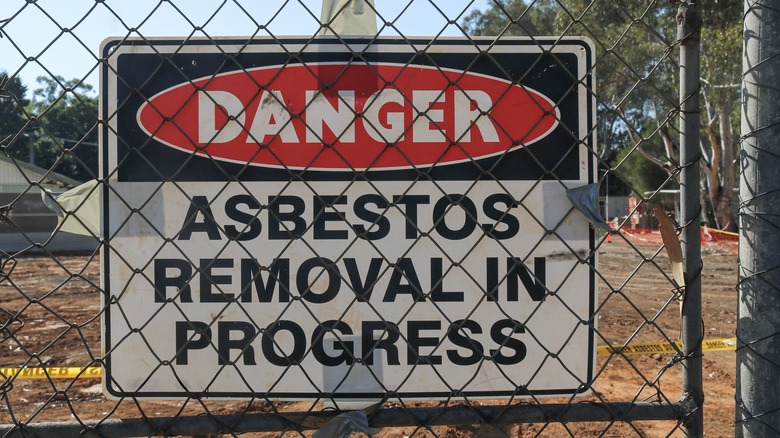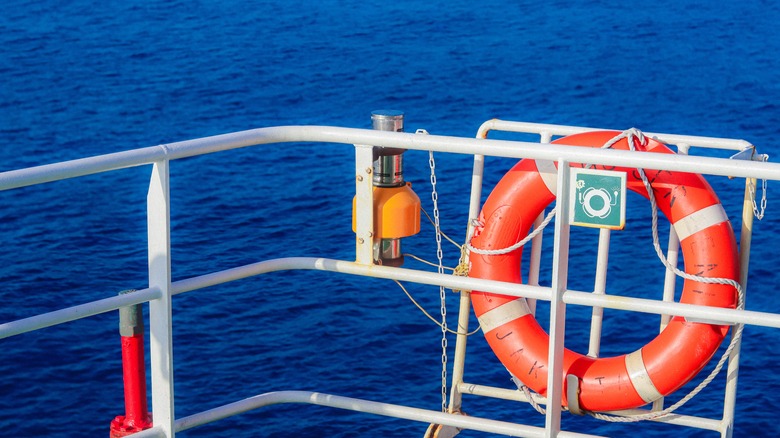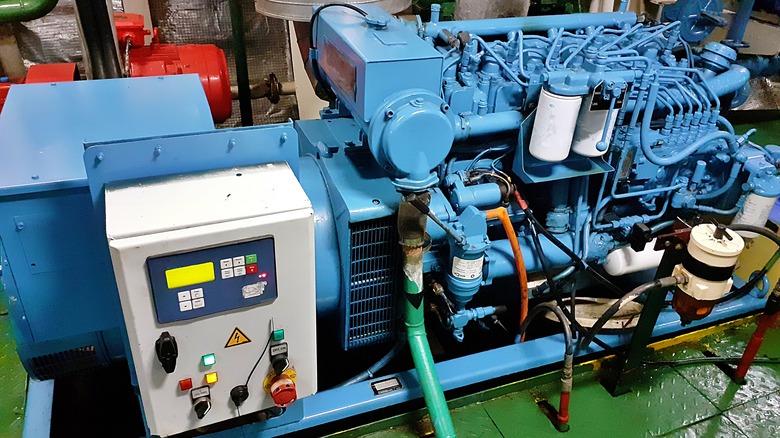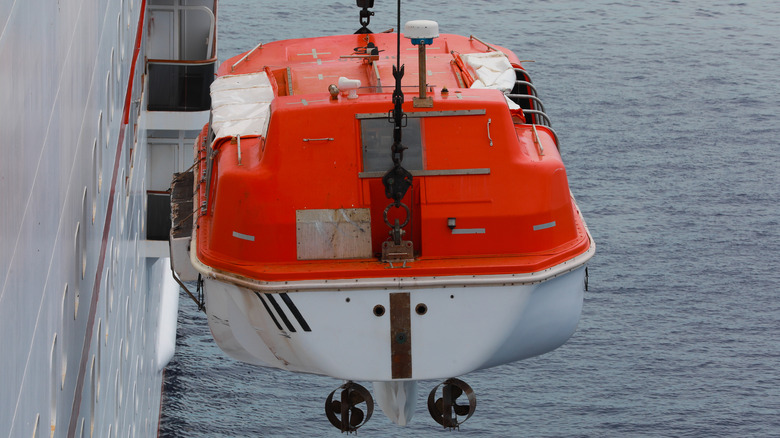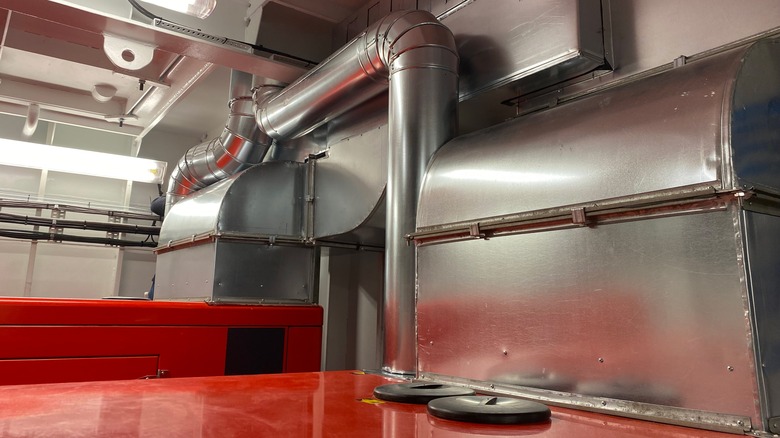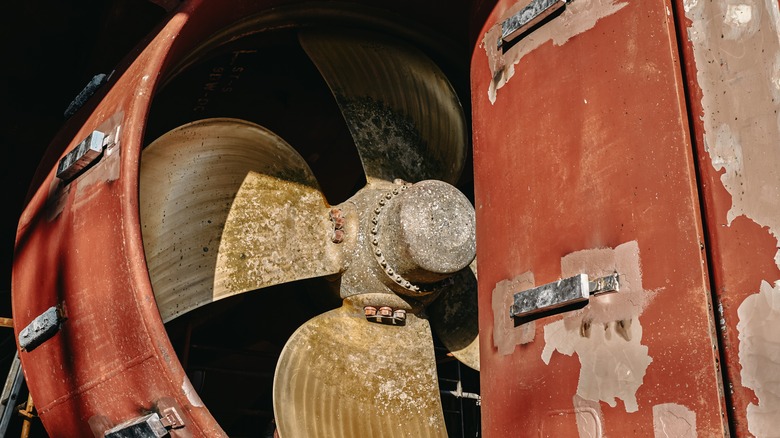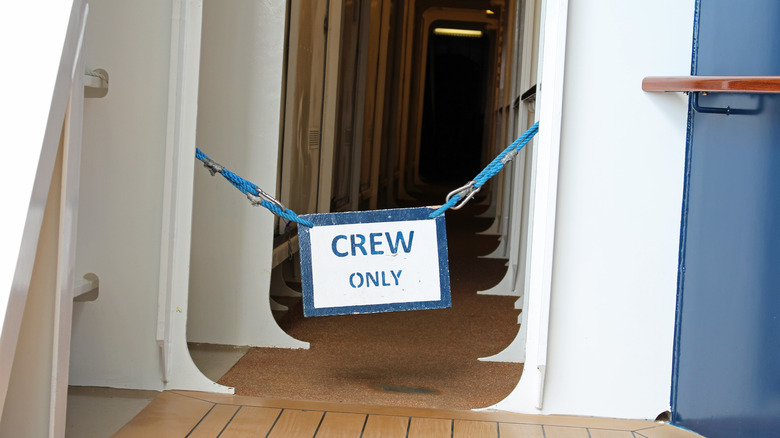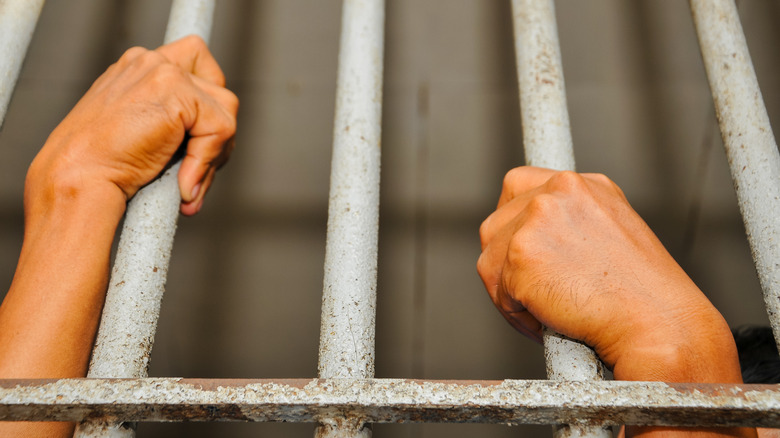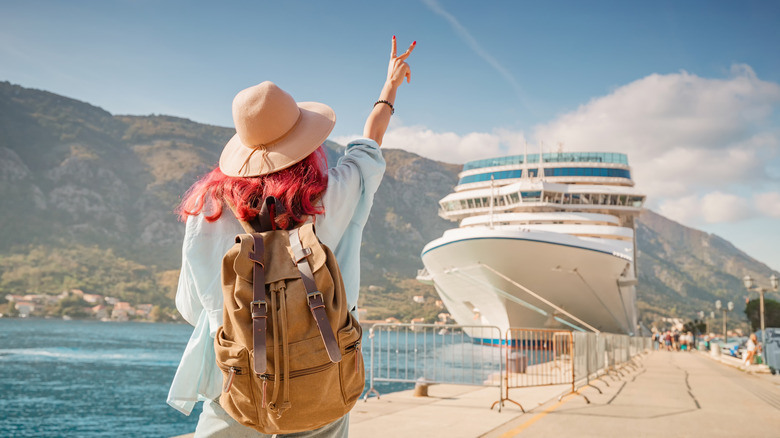The 9 Most Unsettling Cruise Ship Design Secrets, According To Research
In 2025, an estimated 37 million people will step on board any one of over 300 cruise ships and set out on an adventure across the waves. Cruise ships differ from the ocean liners of old because they are less about the destination and more about the journey. Modest cruises exist and are often found plying the rivers of Europe or voyaging to the frozen fringes of the extreme north and south. Meanwhile, modern-day leviathans of the ocean allow passengers to cross waters in comfort and style. Decked out with casinos, swimming pools, enormous atriums, and enough restaurants to feed hundreds of people at any given sitting, such floating cities provide just about everything you could wish.
Yes, there are some unsettling reasons you may want to avoid a cruise, and sure, there are people who find the experience somewhat sanitized. However, choosing a cruise for your vacation brings advantages that are not easily dismissed. Expansive itineraries, lavish entertainment, and an inclusive approach to most activities help create a genuine sense of value. Few other vacations grant the chance to visit so many locations in such a short span of time. Each stop provides a fresh experience and offers new perspectives.
Of course, cruise ships, like most ships, are also full of secrets. Whole sections of the inner workings are kept hidden away from prying eyes. Kitchen staff work night and day to prepare meals, housekeepers and other staff navigate secret passages as they quietly go about their tasks. There are secret hidden decks to discover, rooms in the bowels of the ship that are off limits to all but a select few. And of course, there are those things that the cruise liners would rather you didn't know anything about whatsoever.
Asbestos
Since the very earliest days of maritime history, few things were ever considered more dangerous than an onboard fire. Wooden vessels sealed tight with pitch, tar, and highly flammable oakum created more opportunities for conflagrations to take hold than a malfunctioning three-bar electric fire. Crews were trained to tackle any sign of fire as soon as it was spotted. Modern vessels removed the need to carry tens of thousands of square feet of sail with them, but the vast quantities of coal (and later, diesel) needed to power their engines created risks of their own. Even today, fires on container ships occur with frightening regularity.
Humanity has been making use of asbestos for tens of thousands of years, and that naturally-occurring substances' hazardous properties — it's now a known carcinogen — were at least somewhat understood by as early as the 1st century C.E. Still, it wasn't until the rapid industrialization of the 19th century that it began use as a method of fireproofing. Throughout the 20th century, shipbuilders used asbestos in just about every aspect of ship design. It could be found in paint, cloth wrappings, cladding for boilers, bedding, and even in some of the tiling used in high-traffic thoroughfares.
According to the International Maritime Organization, asbestos started being banned on cruise ships in 2002 and was fully banned in 2011. If you're taking an older cruise ship, especially if it was built before 2002, it may contain asbestos. However, regulations exist to protect crew and passengers from the deadly substance, and ship operators must follow strict management guidelines at all times. Indeed, while there are many unspoken rules that first-timers may not know about cruise ships, worrying overly about the presence of asbestos isn't one of them.
Man Overboard Systems
Falling off a ship can be a major fear when traveling on a cruise. But how likely is it, really? Between railings and other safety equipment, you're not going to fall overboard, right? Overall, overboard rates are rare, but it's still an unsettling concern.
According to a report issued by the Cruise Line International Association (CLIA), between 2009 and 2019, some 212 passengers met with an overboard incident during normal ship operations. That figure — which averages out at about 19 episodes per year — feels a little high, even when considering the millions of passengers who book cruises each year. More recent data suggests the trend continues. In 2024, once again, 19 passengers fell overboard during normal cruise ship operations (via Cruise Radio). Only one survived.
The problems faced by the ancient mariner have not fled from the onset of modernity. Cruise ships are things of inertia; none can turn on a dime, and getting back to the place where the incident occurred takes skill and time. Tragedy is the most common outcome of such an occurrence and tragedy is almost always bad for business. Many modern cruise ships have attempted to mitigate the dangers by installing thermal cameras down the length of the ship that detect when somebody has fallen overboard. Such systems are expensive and far from foolproof, but the goal is to increase response time — not achieve absolute accuracy. Which is, of course, of great comfort to any prospective passenger.
Sewage systems and greywater
When considering what to pack for a cruise, there are many items that quite rightly slip our minds. Modern cruises are, after all, designed to anticipate need. So much so, in fact, that they represent a great opportunity to avoid packing a bunch of useless items and work your way towards the "traveling light" mindset. Yes, carrying toilet paper with you in Italy is an unspoken bathroom rule, but no, you won't need to take some with you on a cruise.
The average cruise ship carries around 3,000 passengers, plus hundreds more in crew members. All that human biomass creates a lot of waste in terms of trash, leftover food, and the unmentionable things that occur in the bathroom. As far as ships are concerned, there are two euphemistic terms used to describe waste: greywater comes from baths, showers, sinks, and washing machines, and is at least somewhat decontaminated with cleaning products. Black water is literal human waste. The question for ship operators is what to do with it all.
In the case of greywater, the solution is simple. They dump it into the ocean. True, there are places where such dumping is forbidden, and sure, filters are used to remove some of the more harmful elements of said water. Still, environmentalists have raised concerns about its impact on the environment. When it comes to black water, the solution is pretty much the same. Thankfully, companies are not allowed to release it in its raw state. It might be kept well away from prying eyes, but yes, cruise ships have sewage treatment plants unironically tucked away somewhere in their very bowels of the ship.
Lifeboat fails
When one turns their mind to lifeboats, there's a natural inclination to think of the Titanic. That ship famously carried far too few boats thanks to outdated legislation that based the required number on the ship's tonnage as opposed to the number of passengers. Post sinking, laws were changed and remain in place to this day, ensuring enough lifeboats for every person on board.
Such a notion is of great comfort to those thinking of embarking on a cruise, whether it be a quick jaunt down the Danube or a tour of the Caribbean on board the world's largest cruise ship. Which is not to say that modern lifeboats are without their issues. The traditional method of launching a boat during a time of crisis is to lower it down to the waterline via a device called a davit. Said devices can be hand cranked or powered by a motor, but there is an important limitation in their design. They work best when boats are lowered perpendicular to the ship and an angle of more than 20 degrees are problematic when it comes to launching the boats safely. Spoiler alert: Sinking ships tend to create angles.
To compound matters is the fact that the lifeboat release mechanisms can be complicated. Poor maintenance and the inevitability of human error mean that boats designed to save lives can sometimes be hazards themselves. In February 2025, a crew member lost his life during a routine lifeboat drill aboard the Norwegian Cruise Line's Breakaway (via Aronfeld Trial Lawyers). A similar accident on board the La Palma killed five, according to Crew Center. Luckily, the use of free-fall lifeboats can mitigate the dangers of a listing ship, although they aren't perfect either.
Ballast tanks and invasive species
Modern cruise ships are incredibly complicated machines. The gap between planning and construction can take several years, costs billions of dollars, and everywhere you look, you'll find ever more luxurious features designed to wow the crowds. Of course, there are other, less impressive metrics around. While cruise line PR teams brag about how many restaurants they have on board — the Icon of the Sea has 40 of them, for instance — less time is spent on the basics of ship design. Nobody is cawing about electrical cabling, few people care how many ladders you'll find on board, and who in their right mind takes the time to look up the size of the ship's ballast tank?
Still, although ballast capacity might make a less interesting dinner party conversation than facts about keel length, passenger capacity, and top speed, it remains one of the most important aspects of ship design. Ballast is used to add stability to a ship as it moves through the water, creating a low center of gravity that keeps vessels from keeling over. So, yes, it's kind of important. And, something of an ecological disaster.
Anyone who has set sail through America's five Great Lakes for an architecture-packed cruise may have heard of the damage being caused by zebra mussels. An invasive species native to Eurasia, they aggressively outcompete their native brethren, coat pipelines, spread botulism, and infest breeding grounds. Famously static, the mussels hitched a ride to the Great Lakes sometime during the 1980s and were let loose into the ecosystem thanks to discharge from ballast tanks. A binding International Convention aimed at limiting similar environmental damage came into effect in 2017, with the aim of avoiding further disasters. Only time will tell if it has been successful or not.
HVAC systems and hot tubs
Nautical terminology drips with opacity, seemingly creating a deliberate barrier to understanding. Speed is measured in knots, staircases are stubbornly referred to as ladders, and the gross tonnage (GT) of a ship has nothing to do with weight. It is, in fact, a measure of internal volume. Meanwhile, a ship's net tonnage refers to how much space is left over once the vessel has been kitted out with all the cabins, moving parts, bulkheads, bilge tanks, and so on. The Icon of the Seas — the current holder of the world's largest cruise ship title — clocks in at 248,663 GT, making it more than five times the size of the Titanic.
Keeping air flowing through all that space is not something that can be accomplished by opening a porthole or two. A ship's HVAC system removes stale air, controls humidity, and regulates temperature throughout the vessel. Indeed, the system is so vital to the smooth running of the operation that no ship would ever set sail with a malfunctioning one. Which is not to say that a fully functioning HVAC lacks jeopardy.
Legionnaires' disease is a bacterial infection that can cause pneumonia. Named after an outbreak at a Legionnaires convention in 1976, it cannot be spread person to person. Instead, the bacillus finds its way into water tanks, where, after use in showers and bathrooms, it can be breathed in as a fine mist. Needless to say, a ship's HVAC system, when combined with miles of internal corridors, cabins, and dining areas, presents multiple opportunities for the bacteria to spread. Thankfully, outbreaks are rare and even when they occur, they tend to be isolated to small groups as opposed to ship-wide affairs. Many have been linked to private hot tubs.
Faulty Propulsion
When most people think of a ship moving along the ocean at speed, their mind naturally turns to thoughts of propellers (huge screw-like devices that create plumes of churn in their wake). The truth is, even if you are traveling on small continental cruises heading towards the Great Lakes, the propellers form only part of the equation when it comes to cutting through the waves.
Many modern ships employ what are known as azipods. These pods certainly contain propellers, but they are capable of rotating 360 degrees and, as such, also serve as the ship's rudder. How many azipods a ship has depends at least in part on the size and desired speed of said vessel. The Icon of the Sea has three of them, along with five subsidiary bow-mounted thrusters. Together, they can help the near 1,200-foot vessel achieve an impressive top speed of 24 knots, or around 28 miles per hour. They also make the ship incredibly maneuverable.
Of course, as is so often the case, the introduction of new technology brings with it fresh challenges. To start with, the pods are external devices. Ship's engineers do not have direct access to them if things go awry. Having to take a ship to a dry dock for essential maintenance has led to a number of cancelled cruises over the years. According to The Maritime Executive, Norwegian Cruise Line sued azipod manufacturer ABB Group in 2017 after four of their ships suffered azipod system failures. Loss of propulsion also occurred on board the HAL Westerdam back in 2022, forcing it to reduce its speed and cancel many of the stops planned along its Alaskan route (via Cruise Mapper). Such incidents are thankfully rare, yet represent yet another reason to make sure to ask yourself what travel insurance is for and whether you need it.
Shoddy crew quarters
Most cruise ships are designed with three things in mind. Top of the list is safety. Next comes the need to dazzle the guests with features such as impressive atriums and splendid amenities that include pools, water parks, and enough restaurants to avoid repetition during even a fortnight's worth of sailing. Lastly, there is, of course, the profit motive. The average cruise ship pulls in around $300 of net profit per passenger for every week it spends at sea. Margins are incredibly tight. Cutting corners is something of an inevitability. Or rather, said corners remain tucked away, hidden from passengers in what amounts to a deliberate obfuscation.
While guests travel in relative luxury, crew members — with perhaps the exception of senior officers — must make do with more modest accommodations. Bunk beds in windowless cabins are the norm with a shared bathroom, a cupboard, and little else in the way of comfort. To make things worse, said state rooms are often placed in less-than-ideal locations. Proximity to busy thoroughfares or heavy machinery generates vibration and noise. The food in the crew-only cafeteria offers less exotic fare than you'd find in your typical guest restaurant, although the quality is reportedly quite high.
Still, while crew accommodation is unquestionably bare bones, they are still well thought out. Many of the people working diligently to ensure the smooth running of the ship live on board for months at a time, and taking care of their sense of well-being is essential for morale. Most ships have crew amenities on board that include recreation rooms, bars, gyms, and perhaps even a sauna or two.
Morgues and jails
The notion that modern cruise ships are akin to floating cities holds up well even under scrutiny. On most ships, alongside all the waste disposal, restaurants, automatic tellers, and in-house launderettes, you'll find a whole host of other features. There are theatres and cinemas, medical staff working in fully equipped infirmaries. Meanwhile, bars, nightclubs, gyms, and pools are pretty much standard fare these days. Oh, and you'll also find a morgue. In case, you know, somebody dies.
It's easy to see why cruise lines might not want prospective customers to dwell on such a morbid thought. The average age of a cruise ship passenger is 55, far lower than it was in the past, thanks to the sudden influx of non-boomers into the cruise market. Still, not even the young are immune to misadventure, and it's a sad fact of life that sometimes people pass away in sudden and unexpected ways. There are, of course, regulations and procedures in place for such an eventuality, but regardless of the specifics of any given incident, one thing remains constant. The body needs a secure place to rest. So, yes, ships have morgues. And jails.
It is, of course, more accurate to say that ships have brigs — secure lockups where anyone accused of criminal activity can be held. Here, you will find yourself held under the rules of maritime law, which are complex to say the least. The ship's officers have to turn you over to the relevant authorities at the earliest opportunity, but that still leaves those who misbehave locked up until the ship arrives at a port of call.
Methodology
This list is the result of meticulous research derived from primary sources associated with the cruise industry, including Cruise Lines International Association (CLIA) and cruising publications like Crew Center and Cruise Mummy. Information relating to hard facts about the design and specifications of ships were taken directly from the vessel's specific cruiseline. Where statistics were involved — such as those relating to man overboard numbers — governing bodies were consulted and cross-referenced with media reports from outlets such as the BBC and government data sets.
